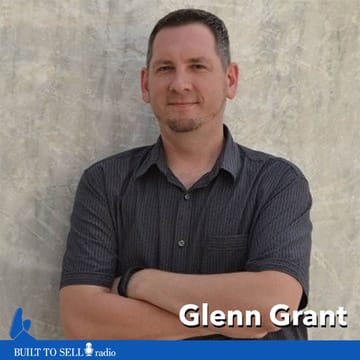About this episode
Glenn Grant always assumed he would sell his company for a multiple of EBITDA… until private equity firms started talking multiples of revenue. He decided to learn more.
To read a transcript of this episode, click here.
Glenn Grant started G2 Technology Group which was in the business of helping website developers host their sites with Amazon Web Services (AWS).
By 2018, Grant had built his company to 30 employees and was planning to grow further by acquisition. That was around the same time he began fielding calls from Private Equity Groups (PEGs), interested in buying G2. The PEGs were throwing around valuation multiples of revenue instead of EBITDA. Grant decided to switch strategies and instead of being an acquirer, agreed to be acquired.
In this episode, you’ll learn:
- The difference between and a financial and strategic private equity group
- How stock appreciation rights are different than options
- Why your company’s culture impacts its value
- How reputational equity as a channel partner can boost your value
- How the sales process differs from an auction (and why in many cases its better)
Grant made an important strategic change early in his business from offering generic IT services to inventing a category of his own called “Managed Dev Ops”. Being the only player in his newly created category gave him the differentiation and pricing authority – two essential drivers of the value for any business. Have you figured out your own “category of one”? If not, let us help you by completing The Monopoly Control exercise – which is module 6 in The Value Builder System™. Get started for free right now by completing module 1.
Check out our article on The Acquisition Entrepreneur.

About Our Guest
Glenn founded Boston-based managed services provider G2 Tech Group, a next-generation MSP linking managed DevOps services to cloud computing. Upon successfully exiting to Great Hill Partners in 2018, G2 merged into Mission Cloud Services where Glenn currently holds the position of President, US East. Glenn is an active member-leader in the Entrepreneurs’ Organization currently overseeing EO Boston’s Accelerator program, which focuses on enabling first-stage entrepreneurs to break through the US$1 million revenue ceiling while obtaining the tools to become a better entrepreneur and leader.


